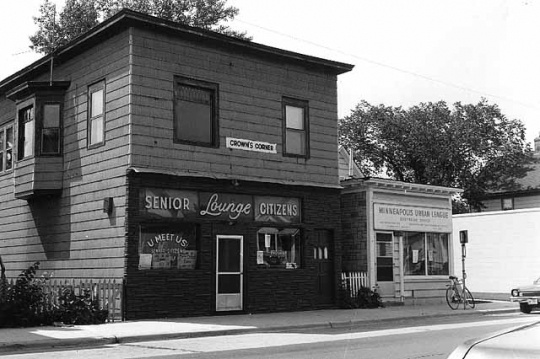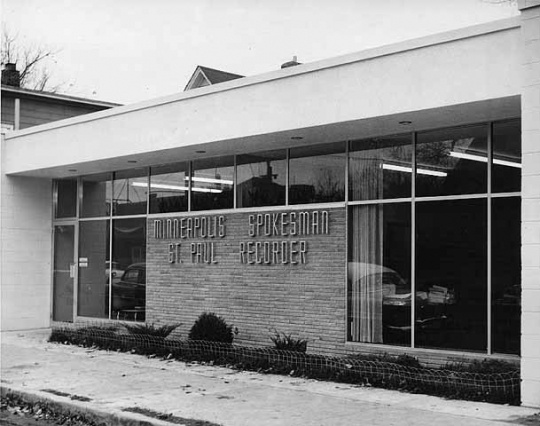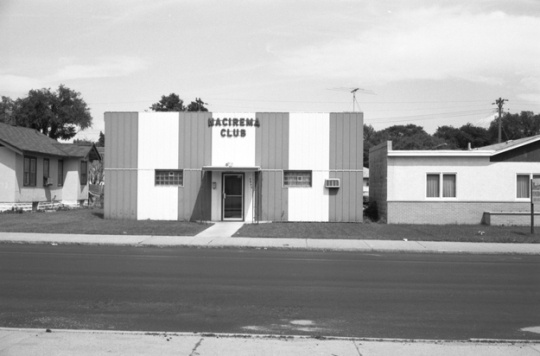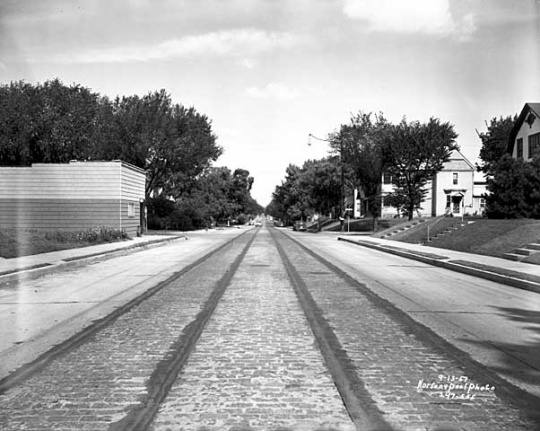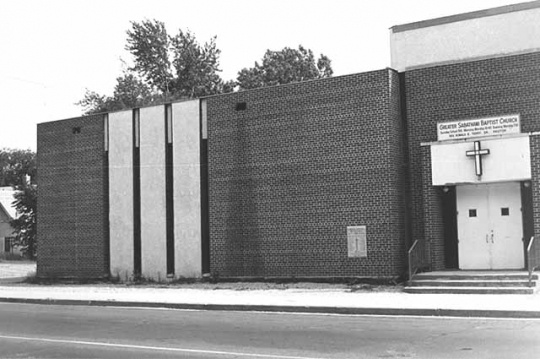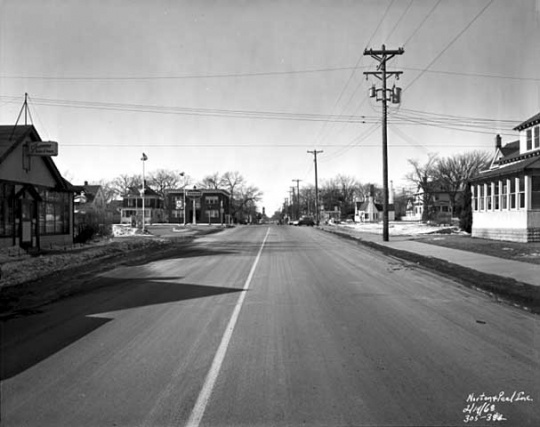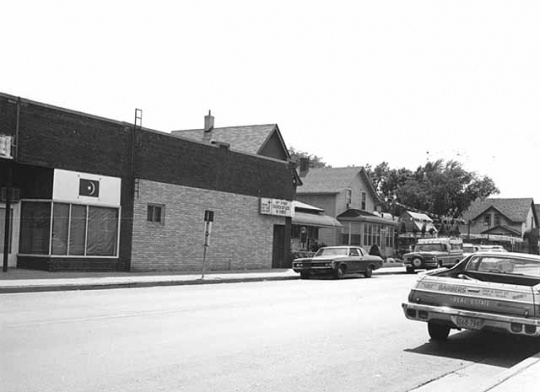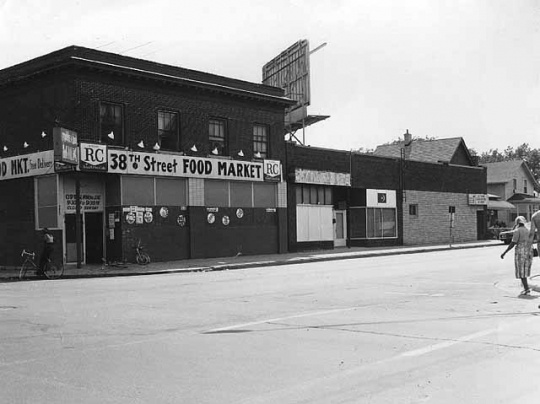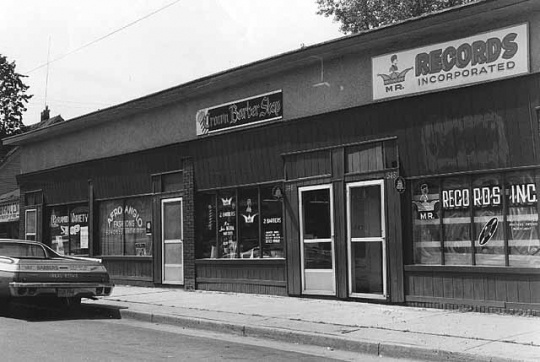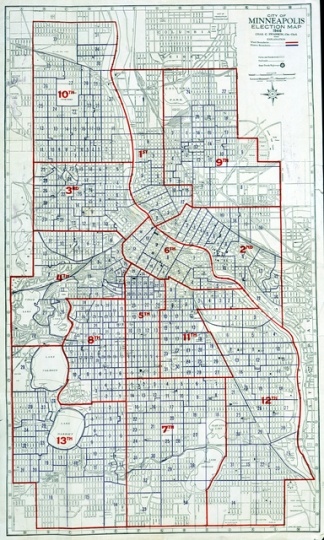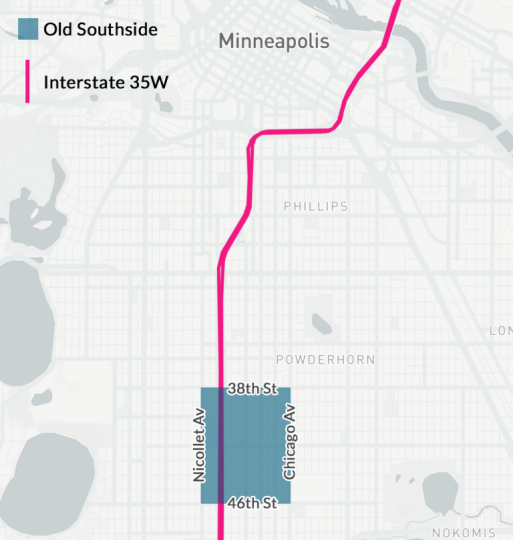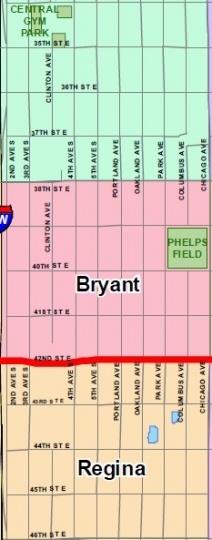Southside African American Community, Minneapolis
Bibliography
City of Minneapolis. The Future of East 38th Street: A 2015 Community Meeting Series Starting February 4.
Originally found at: http://www.minneapolismn.gov/ward8/WCMSP-172208
——— . Tilsenbilt Homes Potential Historic District.
Originally found at: http://www.minneapolismn.gov/hpc/tilsenbilt
——— . 2000 Race and Ethnicity by Neighborhood.
http://www.ci.minneapolis.mn.us/census/2000/census_2000-race-and-ethnicity-by-neighborhood
Metropolitan Population Study. Twin Cities Metropolitan Planning Commission, March 1962.
Miller, Schofield Sandra. Interview with the author, November 15, 2016.
Mindrum, Beverly. “The Negro: Bias in our Backyard?” Minneapolis Star, October 28, 1963.
Minority Population Trends in the Twin Cities Metropolitan Area, 1980. St. Paul: Metropolitan Council, 1983.
Minneapolis City Directory. St. Paul: R. L. Polk & Co., 1937, 1966, 1967.
Minnesota Compass, Central Neighborhood, Bryant Neighborhood and Regina Neighborhood, 2010–2014.
http://www.mncompass.org/profiles/neighborhoods/minneapolis
Pike, Denise. "Old Southside Minneapolis and the 35W Dividing Line." A Public History of 35W, April 29, 2020.
Population Profile of the Twin Cities Metropolitan Area, Development Framework Data Report. Metropolitan Council of the Twin Cities Area, May 1974.
Shirk, Ronald W. Minneapolis Population and Racial Change, 1950 –1990, with 1980 and 1990 Census Tract Information. Minneapolis: Office of the City Coordinator, City Planning Department, 1991.
Smith, Alvedia. Interview with the author, November 11, 2016.
United States Census of Population, 1930. Geographic Distribution and Increase Negroes in the United States, Table 12 – Negro and White Populations, By Sections, Divisions, and States: 1790 to 1930.
United States Census of Population, 1930. Composition and Characteristics, Table 23 – Population by Sex, Color, Age, Etc., for Cities of 50,000 or More by Wards: 1930.
United States Census of Population, 1930. Occupations, Table 12 – Number of Negroes Engaged in Principal Professions, by Sections and Divisions, and States: 1930.
United States Census of Population, 1940. Statistics for Census Tracts, Table 3a – Nonwhite Population by Years of School Completed, Employment Status, Class of Worker, and Sex by Census Tracts: 1940.
United States Census of Population, 1940. Statistics for Census Tracts, Table 4 – Dwelling Units by Occupancy Status and Race of Occupants, by Census Tracts: 1940.
United States Census of Population, 1940. Characteristics of the Population, Table 34 – Race and Age, by Sex, for Cities of 50,000 or More by Wards: 1940.
United States Census of Population, 1950. Minnesota, Table 34 – General Characteristics of the Population, for Standard Metropolitan Areas, Urbanized Areas, and Urban Places of 10,000 or More: 1950.
United States Census of Population, 1950. Minnesota, Table 83 – Race and Class of Worker of Employed Persons, by Industry and Sex, for the State and for Standard Metropolitan Areas of 100,000 or more: 1950.
United States Census of Population, 1960. Minnesota, Table 21 – Characteristics of the Population, for Standard Metropolitan Statistical Areas, Urbanized Areas, and Urban Places of 10,000 or more: 1960.
United States Census of Population, 1970. Table 24 – Age by Race and Sex, for Areas and Places: 1970.
Chronology
1880
1903
1930
1937
1940
1950
1960
1962
1965
1966
1970
1978
1979
1982
1990
2010
Bibliography
City of Minneapolis. The Future of East 38th Street: A 2015 Community Meeting Series Starting February 4.
Originally found at: http://www.minneapolismn.gov/ward8/WCMSP-172208
——— . Tilsenbilt Homes Potential Historic District.
Originally found at: http://www.minneapolismn.gov/hpc/tilsenbilt
——— . 2000 Race and Ethnicity by Neighborhood.
http://www.ci.minneapolis.mn.us/census/2000/census_2000-race-and-ethnicity-by-neighborhood
Metropolitan Population Study. Twin Cities Metropolitan Planning Commission, March 1962.
Miller, Schofield Sandra. Interview with the author, November 15, 2016.
Mindrum, Beverly. “The Negro: Bias in our Backyard?” Minneapolis Star, October 28, 1963.
Minority Population Trends in the Twin Cities Metropolitan Area, 1980. St. Paul: Metropolitan Council, 1983.
Minneapolis City Directory. St. Paul: R. L. Polk & Co., 1937, 1966, 1967.
Minnesota Compass, Central Neighborhood, Bryant Neighborhood and Regina Neighborhood, 2010–2014.
http://www.mncompass.org/profiles/neighborhoods/minneapolis
Pike, Denise. "Old Southside Minneapolis and the 35W Dividing Line." A Public History of 35W, April 29, 2020.
Population Profile of the Twin Cities Metropolitan Area, Development Framework Data Report. Metropolitan Council of the Twin Cities Area, May 1974.
Shirk, Ronald W. Minneapolis Population and Racial Change, 1950 –1990, with 1980 and 1990 Census Tract Information. Minneapolis: Office of the City Coordinator, City Planning Department, 1991.
Smith, Alvedia. Interview with the author, November 11, 2016.
United States Census of Population, 1930. Geographic Distribution and Increase Negroes in the United States, Table 12 – Negro and White Populations, By Sections, Divisions, and States: 1790 to 1930.
United States Census of Population, 1930. Composition and Characteristics, Table 23 – Population by Sex, Color, Age, Etc., for Cities of 50,000 or More by Wards: 1930.
United States Census of Population, 1930. Occupations, Table 12 – Number of Negroes Engaged in Principal Professions, by Sections and Divisions, and States: 1930.
United States Census of Population, 1940. Statistics for Census Tracts, Table 3a – Nonwhite Population by Years of School Completed, Employment Status, Class of Worker, and Sex by Census Tracts: 1940.
United States Census of Population, 1940. Statistics for Census Tracts, Table 4 – Dwelling Units by Occupancy Status and Race of Occupants, by Census Tracts: 1940.
United States Census of Population, 1940. Characteristics of the Population, Table 34 – Race and Age, by Sex, for Cities of 50,000 or More by Wards: 1940.
United States Census of Population, 1950. Minnesota, Table 34 – General Characteristics of the Population, for Standard Metropolitan Areas, Urbanized Areas, and Urban Places of 10,000 or More: 1950.
United States Census of Population, 1950. Minnesota, Table 83 – Race and Class of Worker of Employed Persons, by Industry and Sex, for the State and for Standard Metropolitan Areas of 100,000 or more: 1950.
United States Census of Population, 1960. Minnesota, Table 21 – Characteristics of the Population, for Standard Metropolitan Statistical Areas, Urbanized Areas, and Urban Places of 10,000 or more: 1960.
United States Census of Population, 1970. Table 24 – Age by Race and Sex, for Areas and Places: 1970.














